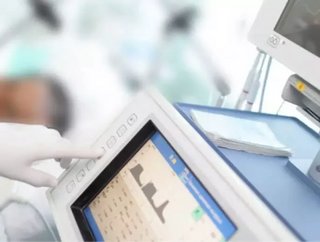EHR & Medical Device Integration Could Save $30bn

West Health Institute has published a report estimating that improving interoperability between medical devices and electronic health records (EHRs) in hospitals could save more than $30 billion a year – it also suggests that patient care and safety could be greatly improved.
The report outlined a number of sources of potential savings including:
- Increased capacity for treatment as a result of shorter lengths of stay ($18 billion)
- Increased clinician productivity because of less time spent entering device data manually into EHRs ($12 billion)
- Avoidance of redundant testing ($3 billion)
- The reduction of adverse events because of "safety interlocks" ($2 billion)
Joseph M. Smith, MD, Chief Medical and Science Officer of WHI presented the study in a testimony before the House Energy and Commerce subcommittees. He suggested regulatory and policy changes that he said could help create the conditions for interoperable systems that encompass medical device data. But in an interview with InformationWeek Healthcare, he said he hoped that the impetus for interoperability would come from the private sector.
The WHI report noted a recent study by HIMSS Analytics, which stated that more than 90 percent of hospitals use six or more types of devices that could be integrated with EHRs, such as defibrillators, electrocardiographs, vital signs monitors, ventilators and infusion pumps. However the report suggests that only a third of hospitals integrate any medical devices with EHRs, and those that do, on average, integrate only three types.
Read Related Articles In Healthcare Global
- Benefits Of EHR & How To Overcome Potential Challenges
- mHealth App Market To Be Worth $26bn By 2017
- Medical Devices Changing Doctor / Patient Communication
There are a number of reasons why limited interoperability is an issue. The report stated that a lack of standardization of interfaces between devices and EHRs could be the main concern. “This creates high cost and complexity that deters many providers from investing in this capability. The cost of medical device integration, the report stated, can range from $6,500 to $10,000 per bed in one-time costs, plus up to 15 percent of that in annual maintenance costs,” wrote Information Week.
Unfortunately, the medical device makers don’t have a lot of incentive to standardize their interfaces. The report highlighted that 93 percent of financial benefits would accrue to healthcare providers and none to the device vendors. Smith also stated that the device companies benefit from having their devices communicate only with other machines from the same vendor, which protects their market share. Conversely, if standard interfaces became the norm, the barriers to entry for entrepreneurial firms would decline, which could potentially lead to greater competition for the big device firms.
If these objections could be overcome, along with distrust between vendors that might not want their devices to communicate for safety reasons, there could be significant benefits from interoperability, the report said.
According to Smith, the negatives are far outweighed by the positives. He believes that greater interoperability to improve the following:
- Alerts from bedside monitoring devices could be much more relevant than they are today if devices interoperated with EHRs and each other. Currently, clinicians often ignore beeping monitors in the hospital because of alert fatigue. Automation and "local control" features could help minimise that.
- Lab results could be pushed automatically to EHRs. While this is supposed to happen in hospitals that have computerized physician order entry (CPOE), point-of-care devices that quickly do a urinalysis in the emergency department, for example, don't have that capability. These devices require manual data entry. So do vital signs machines that are not hooked up to EHRs.
- Nurse time spent programming infusion pumps could be greatly reduced if the pumps were programmed automatically, using “provider-ordered and pharmacist-validated infusion variables.”
The report suggests that if medical devices and EHR systems were more in sync with one another, then it could in the long-term save huge costs for hospitals and increase safety and the quality of patient care.
SOURCE: Information Week






